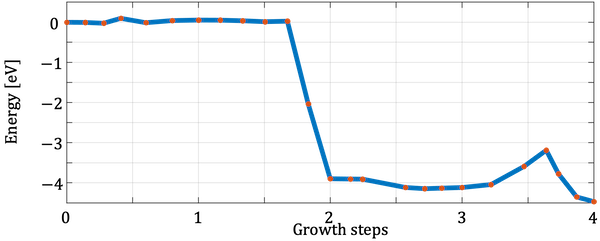Growth mechanisms of CVD diamond
E. Guillaume1,2*, K. Haenen2, D. E. P. Vanpoucke2,3, L. Henrard1
1 Laboratoire de Physique du Solide, Département de Physique, Université de Namur
2 Instituut voor Materiaalonderzoek (IMO), Universiteit Hasselt
3 Faculty of Engineering and Architecture
Department of Electromechanical, Systems and Metal Engineering, Universiteit Gent
*emerick.guillaume@unamur.be
Growing allotropic forms of carbon (ranging from sp2 bonded for graphene to sp3 bonded for diamond) is an increasingly interesting research area. Despite pure diamond and graphene not being suitable for electronic applications, their doped counterparts might be tomorrow’s building blocks for electronic and quantum applications. Hence the need to better understand the atomic-scale mechanisms that enhance growth rate and doping concentration of such promising materials.


- Cheesman et al., J. Phys. Chem. A, 2008, 112, 11436–11448
- Oberg et al., Carbon, 2021, 178, 606-615
